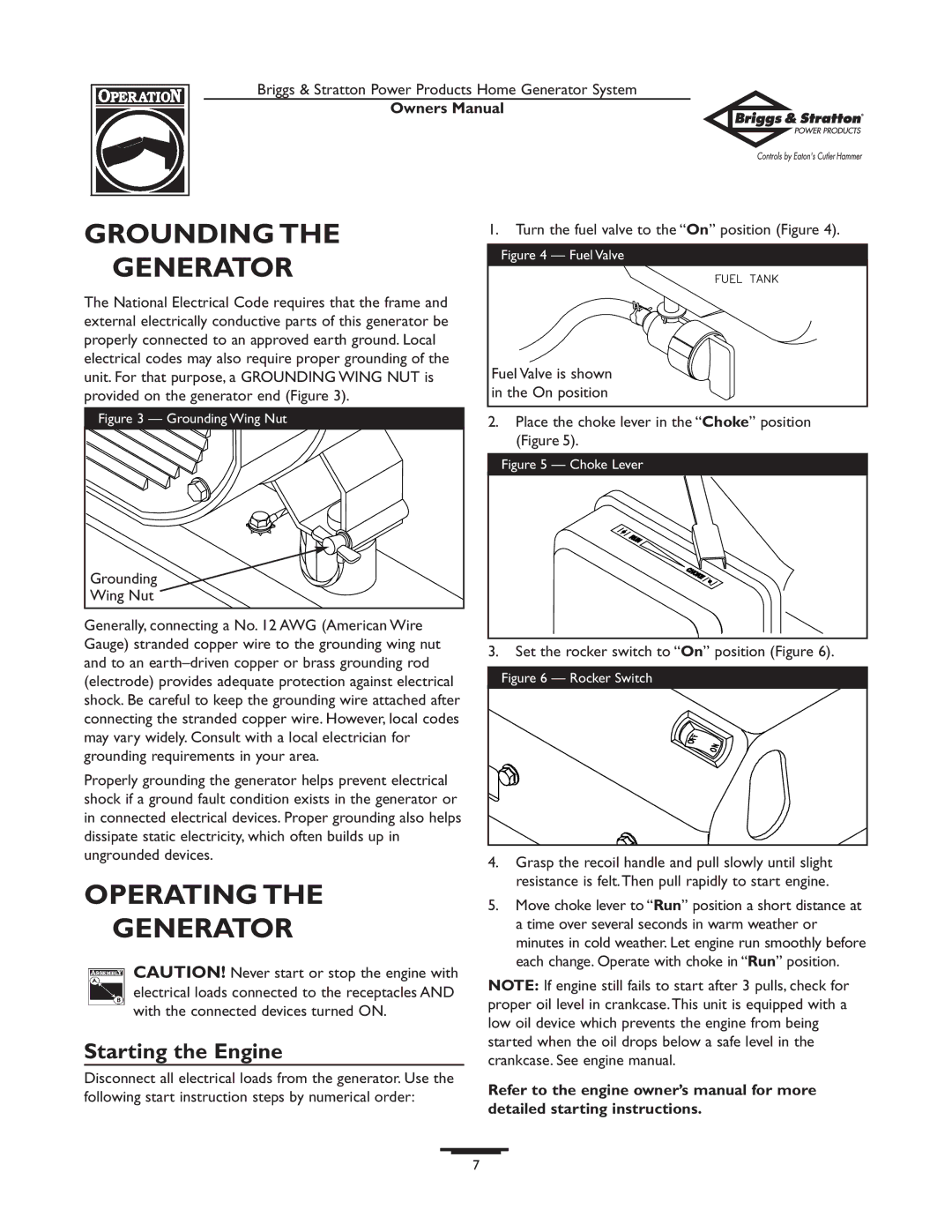190477GS specifications
The Briggs & Stratton 190477GS engine is a notable power source designed primarily for residential use in various outdoor equipment. Renowned for its reliability and performance, this engine has carved a niche in the market for consumers seeking efficient and durable power solutions.One of the standout features of the 190477GS is its OHV (Overhead Valve) design, which enhances fuel efficiency and provides improved airflow. This technology not only optimizes power output but also contributes to lower emissions, aligning with modern environmental standards. The engine operates with a 4-cycle, air-cooled configuration, which is essential for maintaining consistent performance during prolonged use.
Handling a displacement of 344cc, the 190477GS delivers the necessary torque and power for a variety of applications, including lawn mowers, pressure washers, and small tractors. With a maximum output of approximately 10.5 horsepower, it provides ample strength for tackling tough outdoor jobs, ensuring that users can work effectively and efficiently.
Another key characteristic of the 190477GS is its ease of starting. Equipped with a reliable recoil starter and featuring an advanced ignition system, users can experience smooth and quick starts even in challenging conditions. This is particularly beneficial for homeowners who require dependable performance during peak usage seasons.
Durability is a significant focus in the design of the Briggs & Stratton 190477GS, with a robust construction that includes an aluminum crankcase and a formed steel base. These materials contribute to the engine's resistance to wear and tear over time. Moreover, routine maintenance is made simple with easily accessible components, allowing users to perform service tasks without the need for specialized tools.
In terms of noise reduction, the 190477GS features a built-in muffler that minimizes operational noise, creating a quieter working environment, which is highly advantageous for residential areas. Safety features are also integrated into the design, including an oil alert system that helps prevent engine damage by ensuring that oil levels are adequate.
Overall, the Briggs & Stratton 190477GS engine combines innovation with practicality. Its blend of power, efficiency, and user-friendly design makes it an excellent choice for various outdoor applications, providing reliability and performance that users can trust.

